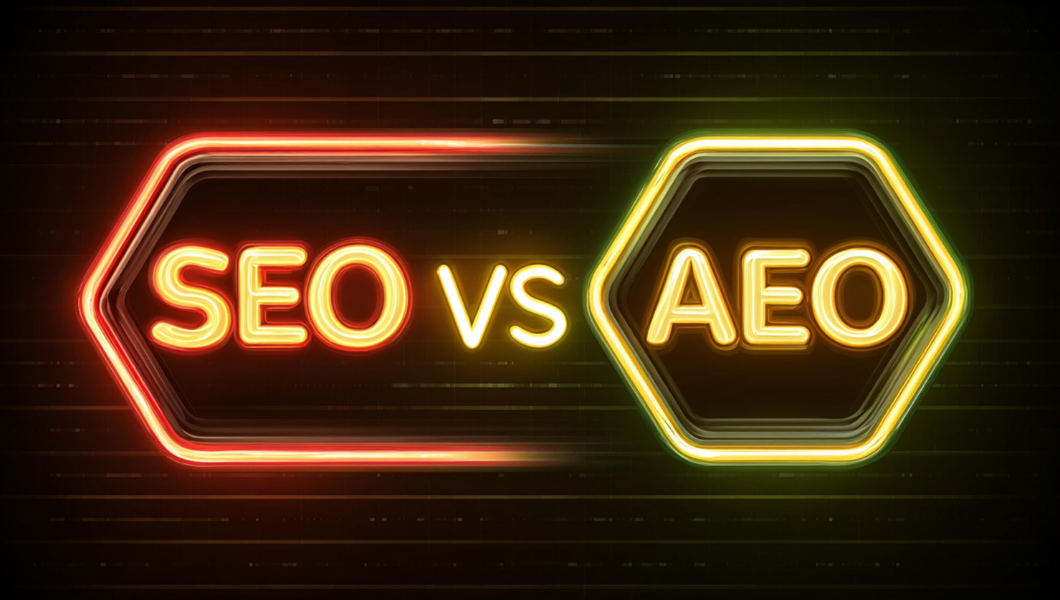For years, ranking on Google’s first page was the holy grail of digital marketing.
Marketers poured energy into keyword research, backlinks, and long-form blogs optimized for traditional SEO. But a major shift is happening right now. AI-driven search platforms like ChatGPT, Google’s Search Generative Experience (SGE), Bing Copilot, and Perplexity are changing how buyers discover and evaluate brands.
Instead of typing a query and scrolling through 10 links, today’s decision-makers are asking a chatbot, “What are the best enterprise data security platforms?” and getting one synthesized answer. If your brand isn’t showing up in that AI-generated response, you’re not even part of the conversation.
That’s where AEO (Answer Engine Optimization) comes in. For B2B tech companies, AEO is not just a buzzword, it’s a survival strategy in a world where AI increasingly controls visibility.
Why AEO Is Becoming Critical for B2B Tech Brands
- AI is taking a big slice of search traffic.
Gartner predicts that by 2026, 30% of all organic search traffic will be displaced by AI chatbots and virtual agents. That’s not a niche change, it’s a tectonic shift. If your strategy is only SEO-driven, you risk losing a third of your potential organic reach. - Buyers want instant, trustworthy answers.
According to a Forrester study, 68% of B2B buyers prefer to research independently online before engaging a sales rep. When they use AI search tools, they expect clear, authoritative answers, not a list of links to click through. - Trust is shifting toward AI-curated sources.
A 2024 BrightEdge survey found that 43% of B2B buyers trust AI-generated answers as much as, or more than, traditional search results. In other words, it’s not just about visibility; it’s about credibility.
From SEO to AEO: What’s Actually Different?
SEO and AEO are related, but they optimize for different outcomes:
- SEO focuses on ranking for keywords: “Top B2B automation software.”
- AEO focuses on structuring knowledge so AI engines can cite it directly: “What features define the best automation software for B2B companies in 2025?”
Here’s how the focus shifts:
|
SEO |
AEO |
|
Optimize for algorithms |
Optimize for human questions |
|
Long-form keyword-rich blogs |
Concise, structured answers & FAQs |
|
Compete for first-page ranking |
Compete for AI-generated citations |
This doesn’t mean SEO is dead. It means SEO is evolving & AEO is the next step.
Case Study: A SaaS Brand Adapts to AEO
Consider a mid-market SaaS company in HR technology. In 2024, their organic traffic dipped nearly 20%, even though their SEO rankings hadn’t slipped. Why? Their prospects were using ChatGPT and Perplexity to evaluate HR platforms, skipping Google entirely.
Here’s how they adapted:
- They added FAQ sections to high-value blogs (“How does AI improve HR onboarding?”).
- They published short data-driven explainers tackling niche technical queries.
- They incorporated schema markup to make their content machine-readable.
Within six months, their content began showing up as a cited source in AI responses. While overall site traffic fell, inbound demo requests rose 32%. The lesson? AEO brings in fewer browsers, but more buyers.
5 Practical Ways to Start Winning with AEO
- Restructure Content for AI Readability.
Use clear H2/H3 headings, bullet points, and definitions. For example, instead of writing a 2,000-word block of text, break out sections like: “Benefits of Kubernetes in 2025” or “Key ROI Metrics for Cloud Security.” - Publish Authoritative, Research-Backed Content.
AI engines are more likely to cite sources with credible data. Original research, customer case studies, and expert commentary stand out. For instance, HubSpot’s annual State of Marketing Report is often referenced in AI summaries because it’s data-rich. - Target Conversational Queries.
People type into search bars differently than they speak to AI tools. Instead of optimizing only for “cybersecurity SaaS,” create content answering, “What are the top cybersecurity SaaS tools for mid-market enterprises in 2025?” - Leverage Schema and Structured Data.
Schema markup (like FAQ schema and How-To schema) helps AI platforms “understand” your content. Google SGE in particular pulls heavily from structured data to generate its responses. - Track AI Citations as a New KPI.
Just as you track SEO rankings, begin monitoring whether your content is showing up in AI-generated answers. Perplexity Pro Search and SEMrush’s new AI-tracking tools are good starting points.
The Bigger Picture: Where AEO Is Headed
We’re entering a new era where AI doesn’t just help people find information, it decides which information deserves to be seen. For B2B tech companies, that means brand visibility hinges on whether AI tools “trust” your content enough to cite it.
The companies that mastered SEO in the early 2000s built enormous digital moats around their businesses. Today, those who invest in AEO are positioning themselves to own tomorrow’s buyer journey.
Position Your Brand for the AI Search Era
Answer Engine Optimization isn’t a replacement for SEO, it’s the next evolution. It’s about meeting your buyers where they are and making sure your expertise surfaces in the conversations that shape purchase decisions.
At Marketing Mavens, we specialize in helping B2B tech brands stay ahead of these shifts. Our focus isn’t just on clicks—it’s on building revenue-driven funnels that convert AI-era visibility into measurable pipeline.


.webp?width=352&name=AEO%20(2).webp)


Free Revenue Growth Assessment Consultation